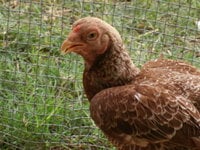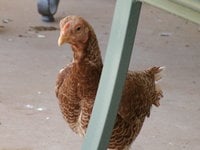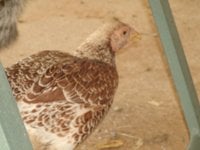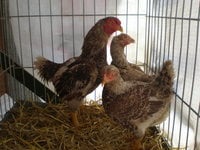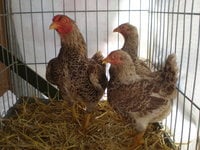General Information
- Breed Purpose
- Meat
- Comb
- Pea
- Broodiness
- Average
- Climate Tolerance
- All Climates
- Egg Productivity
- Low
- Egg Size
- Small
- Egg Color
- Light Brown/Cream
- Breed Temperament
- Easily Tamed, Friendly, Talkative & Active
- Breed Colors/Varieties
- Dark, White, White Laced Red, Triple Laced, Buff ect.
- Breed Size
- Bantam
Cornish Bantams were first introduced to the public as Indian-Game bantams in 1887. The have the same make-up as the large fowl Cornish: Aseel, Black Red Pit Game and Black Red Malay was used to create the bantam, with the addition to crossing the bird with a Black Red Game bantam to create these bantam size birds. The Indian-Game name was officially switched to the Cornish in 1920. It is not known when the the bird was first imported to the United States, but the breed first appeared at the St. Louis show in 1904.
Cornish bantams are not good layers, with hens averaging 2 eggs per week. They are therefor more popular as meat chickens, partly due to their large breast size, which makes them an appealing table bird.
It is recognised by the American Poultry Association.
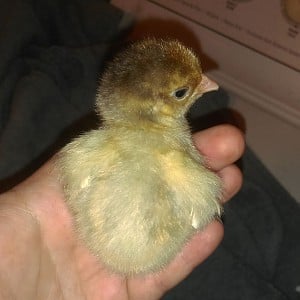
Cornish bantam chick
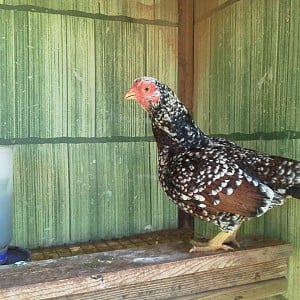
Cornish bantam hen
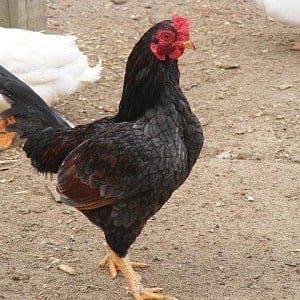
Cornish bantam rooster

